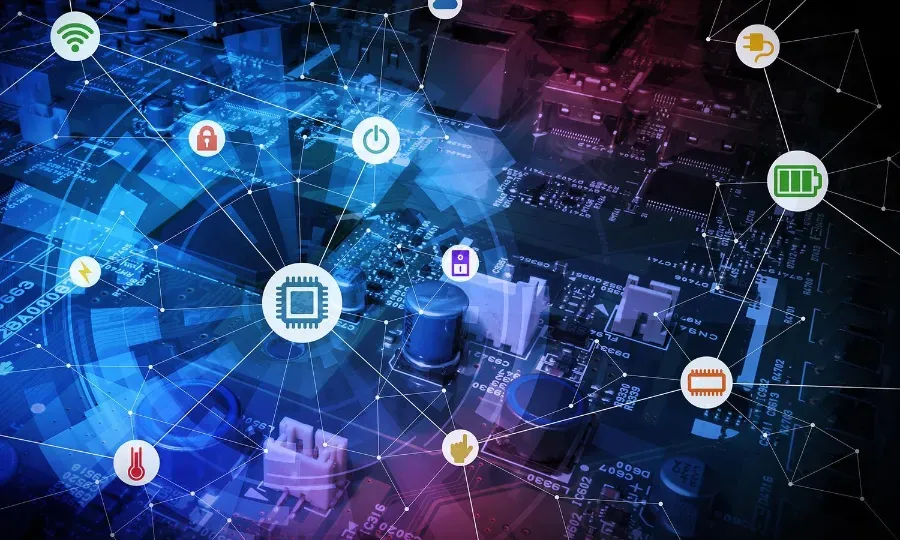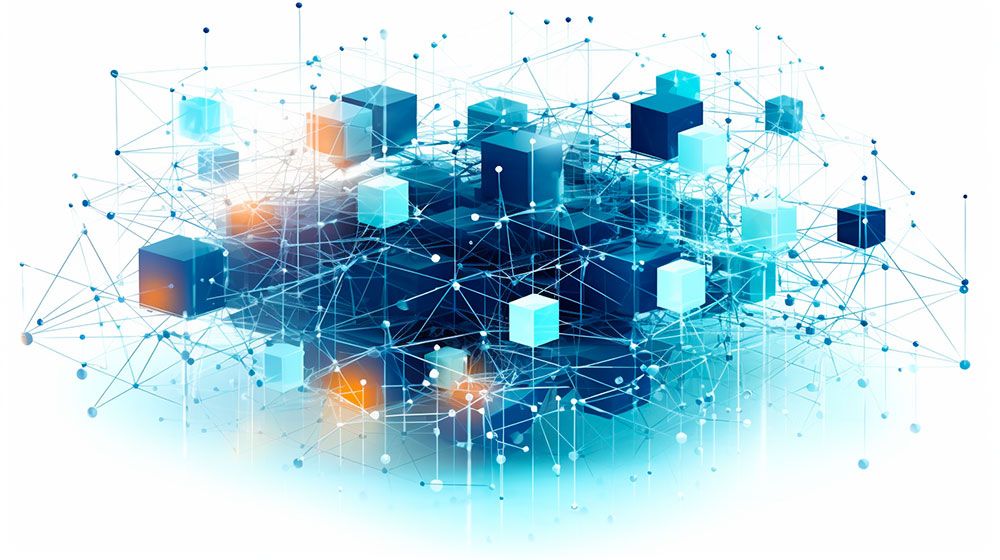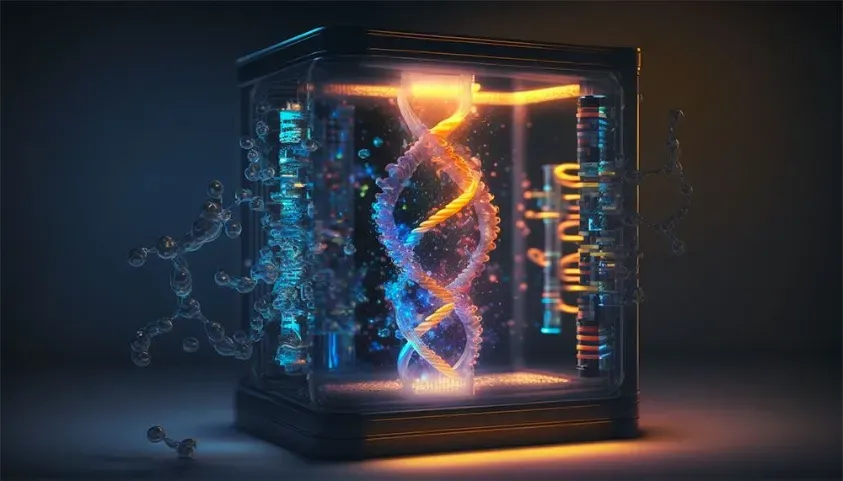How Unlimited Computing Power, Swarms of Sensors and Algorithms Will Rock our World

We have entered a world where accelerated change is the only constant. The speed at which technologies are currently developing is unlike any other since the existence of mankind. When we look at the past two hundred years, we have seen multiple inventions that changed society as we knew it. First we had the invention of the book press, which made books available for the (general) public. Then we had the invention of the steam machine, which significantly altered any industry on earth and pushed mankind to the next level. And in the 20th century we saw the invention of the Internet and the computer. This latest ‘information revolution’ is of a different scale than the industrial revolution made possible by the steam machine.
Although when the Internet was invented, it did not yet look like something major was going one. But isn't that always the case with ground breaking inventions? It takes some time before you know what has happened. Now, almost fifty years later, we can finally get a glimpse about the profoundness of this invention as we slowly, but surely, enter the information era.
In the past decades, we have seen the creation of a digital infrastructure that is unlike anything else. Any country, almost any organization and, in the next few decades, every human will be connected to this infrastructure we like to call the Internet. This digital infrastructure enables us to digitize anything and everything. And that is going to change the playing field.
For sure it is going to change how we do business. As a C-level executive you should be ready for this change, at least if you wish your organization to be around in the next decade. Because those organizations that do not adapt to the new, digital, reality will face extinction. Wasn't it Charles Darwin who said, “it is not the strongest of the species that survive, nor the most intelligent that survives. It is the one that is most adaptable to change"? This sure goes for organizations when we enter the era of algorithms.
But how did we arrive at this point in time where we can expect the earth to move from version 1.0 to version 2.0, which is an upgraded, smarter, version? Well, it turns out that there are several major trends responsible for this. As I would like to focus on the digital aspect of Earth 2.0, I will discuss three trends that are solely responsible for propelling the information revolution:
- Unlimited computing power in the cloud
- A swarm of sensors that will make everything smart
- Smart algorithms thanks to Artificial Intelligence and Machine learning
These three major trends will affect any part of our society, including how we do business. Let’s have a look at each of them:
Unlimited Computing Power
The price of storing data has fallen in the recent years to approximately $ 0,03 per Gigabyte. Taken into account Moore’s law, we can expect this to drop even further in the coming years. Data storage therefore is no longer a constraint anymore for organizations. This means that they can, and should, collect and store any data that they can find, which then can be analyzed using smart algorithms, about which later more.
However, storage of data is not the only part required for a smarter planet. The speed at which the data can be analyzed is also vital for organizations. Once again, thanks to Moore’s law, the hardware required has increased exponentially in the past years and will continue to do so. As a result a computer chip used in a super computer today, will cost null to nothing by 2020. By that time we will all be having a super computer in our pocket.
But hardware is not the only component of unlimited computing power. In the recent years we have also seen new technologies appear that are capable of analyzing all that data. I am talking Terabytes or even Petabytes of data, in merely seconds.
Open source technologies such as Apache Spark are capable of in-memory analysis of data across a distributed network of 1000s of nodes. i.e., they are capable of analyzing the data streaming from a vast amount of sensors, or the Internet of Things, as well as all the unstructured data being created by consumers around the world.
Unlimited computing power can now be accessed without the requirement of buying a supercomputer, but merely by using a cloud services like AWS or Microsoft Azure, or any other for that matter. Using the cloud you only pay for what you are using and you can scale indefinitely. Well, that has changes how we do business.
A Swarm of Sensors
Apart from unlimited computing power, we have also created a connected world in the past years. This world will become more and more connected, with up to a trillion connected devices in the coming decade. All these sensors will make our world smart and we call it the Internet of Things. According to Cisco, the Internet of Things is going to be a $ 19 trillion market within the coming decade. This includes a projected $ 2.9 trillion for manufacturing, or the fourth Industrial Revolution.
In the future, we will find sensors in any imaginable place. Ranging from sensors in roads to monitor traffic, sensors in machinery used for predictive maintenance or sensors within cars to monitor driving behavior and adjust your car insurance policy accordingly. Sensors will become so cheap and so small that we will even find them in our clothes or in our medicines.
A swarm of sensors will engulf the earth and create a truly smart world. And excitingly enough, this is no longer science fiction. Scientists at Harvard University developed the Kilobot (cover image), obedient miniature robots that act together as a “swarm” to form a 1,000-strong army. Each robot measures only a few centimeters across and they can independently organize themselves. They are given no direct information about their global position but collectively construct a coordinated system.
Kilobots are just the beginning. A smart world full of these, or even smaller, robots, will significantly change how organizations should be managed. It will change how organization should approach innovation. And it will change how organizations should connect with their customers. The Internet of Things will therefore require companies to change their culture. A new culture, where decisions are based on deep data analytics and insights by combining multiple data sources in a networked environment.
Smart Algorithms
In order to understand the massive amounts of data that will be generated by those trillions of sensors, we require smart algorithms. Fortunately, in the past years the development of algorithms has been brought to the next level thanks to advances in Artificial Intelligence, Machine-Learning and Deep Learning. These concepts are revolutionizing Big Data analytics and as such revolutionize your business.
The potential of Artificial Intelligence is immense. In fact, a 2013 study by Oxford University projected that Artificial Intelligence could take over nearly half of all jobs in the United States in the near future. Artificial Intelligence’s most common application is about finding patterns in enormous quantities of data and to take action autonomously, automatically. This allows companies to automate and improve complex descriptive, predictive and prescriptive analytical tasks and create value at unprecedented level.
All the large tech companies are working on Artificial Intelligence, with Google’s DeepMind at the forefront. They have actually moved to Intuitive Artificial Intelligence as we saw when their algorithm AlphaGo won the game of Go. It goes a step further than artificial intelligence as we know it, because it can learn from the data it processes and analyzes and uses deep learning to improve itself. The more data they process, the better they become at the task they were designed for, or potentially not designed for.
Deep learning is a very powerful set of techniques using neural networks to develop new applications and create new insights. Deep learning is often used in speech recognition, visual object recognition or object recognition. It is used in applications such as genomics, drug discovery, and fraud detection or more commonly in applications such as Viv, the ‘new Siri’, which relies heavily on deep learning and algorithms.
Smart algorithms are taking over the world and they are taking over your business, so it is important to be aware of its potential and what it can do for your organization or if you don’t pay attention, how it can harm your business.
Roadmap to the Future
The triangle of unlimited computing power, a network of sensors around the world and deep learning algorithms that can make sense of all the data is changing society. Earth is truly moving towards a more intelligent and improved version. I believe, this is definitely a change for the better, but your organization should dare to move in this direction as well if you want to take advantage of it.
As a C-level executive it is therefore your job to understand how these trends are affecting your industry and your business. As for each industry, the affect will be different. So what should your organization do to prepare for this future? How can you ensure that you don’t miss the boat? What steps should you take to remain innovative?
Well, it turns out that apart from the technical component of the three trends, there is also a very big people’s component. After all, you can have access to unlimited computing powers that analyze data from a plethora of sensors, but if you don’t have the right company culture you will not benefit from it.
A fundamental aspect of winning, innovative, organizations is that they have a data-driven, information-centric culture with a capability to solve problems from a user perspective. They use data to obtain this user perspective and consequently constantly iterate the product development until they have created the product customers are looking for. This is called design thinking.
Design thinking is all about understanding a problem at hand, exploring the different possibilities, prototyping new products/versions and consequently evaluating the feedback received from the customers. It is a cyclical process that helps organizations create the best products. Design thinking and iterative strategy development, based on real-time data streaming into your organization are the new reality.
So, in order to prepare for the information era, ensure that your organization understands how trends like unlimited computing power, swarms of sensors and smart algorithms can be used to create products and services your customers are looking for. Change your culture to a data-driven, information-centric culture, where innovation is at the center of your organization. Doing that and your business will still be around when we have created Earth 2.0.





